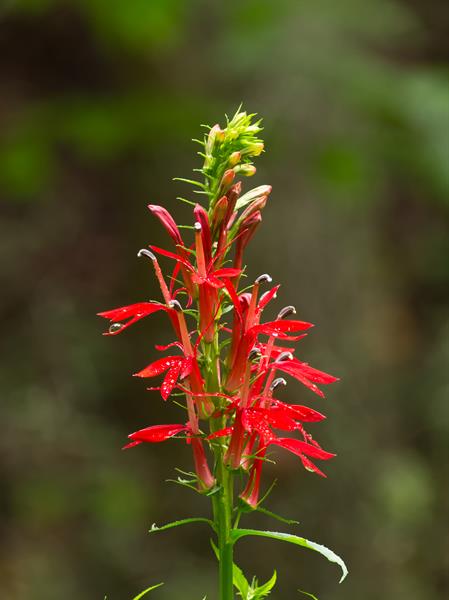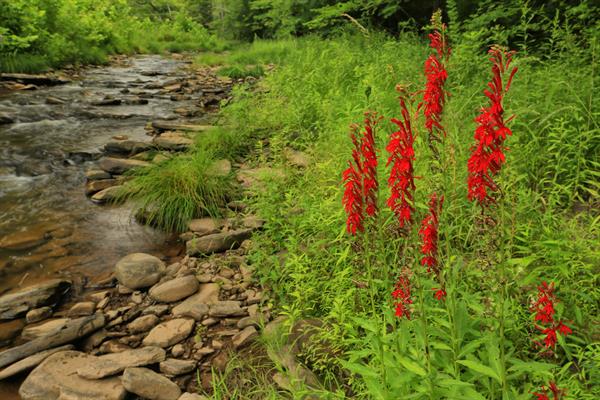
Origin/Endemic status: Native
Taxonomy Comments: See Thompson & Lammers (1997) for discussion of taxonomy.
Synonymy: = C; = Lobelia cardinalis L. – F, S, McVaugh (1936a); = Lobelia cardinalis L. ssp. cardinalis – GW2, Tx; < Lobelia cardinalis L. – Ar, Fl7, G, Il, K1, K3, K4, Mi, Mo2, NcTx, NE, NY, Pa, RAB, Tat, Tn, Va, W, WH3, WV, Spaulding & Barger (2016); > Lobelia cardinalis L. ssp. cardinalis var. cardinalis – Bowden (1982); > Lobelia cardinalis L. ssp. cardinalis var. meridionalis Bowden – Bowden (1982)
Wetland Indicator Status:
- Atlantic and Gulf Coastal Plain: FACW (taxonomic split from wetland indicator species)
- Eastern Mountains and Piedmont: FACW (taxonomic split from wetland indicator species)
- Great Plains: FACW (taxonomic split from wetland indicator species)
- Midwest: OBL (taxonomic split from wetland indicator species)
- Northcentral & Northeast: OBL (taxonomic split from wetland indicator species)
Heliophily: 5
Hover over a shape, letter, icon, or arrow on the map for definition or see the legend.
 © Jim Fowler | Original Image ⭷
© Jim Fowler | Original Image ⭷ © Jim Fowler | Original Image ⭷
© Jim Fowler | Original Image ⭷ © Alan M. Cressler | Original Image ⭷
© Alan M. Cressler | Original Image ⭷ © Sonnia Hill | Original Image ⭷
© Sonnia Hill | Original Image ⭷ © Keith Bradley | Original Image ⭷
© Keith Bradley | Original Image ⭷ © Sonnia Hill | Original Image ⭷
© Sonnia Hill | Original Image ⭷ © Scott Ward | Original Image ⭷
© Scott Ward | Original Image ⭷ © Bruce A. Sorrie | Original Image ⭷
© Bruce A. Sorrie | Original Image ⭷Feedback
See something wrong or missing on about Lobelia cardinalis var. cardinalis? Let us know here: (Please include your name and email if at all complicated so we can clarify if needed.)
Cite as...